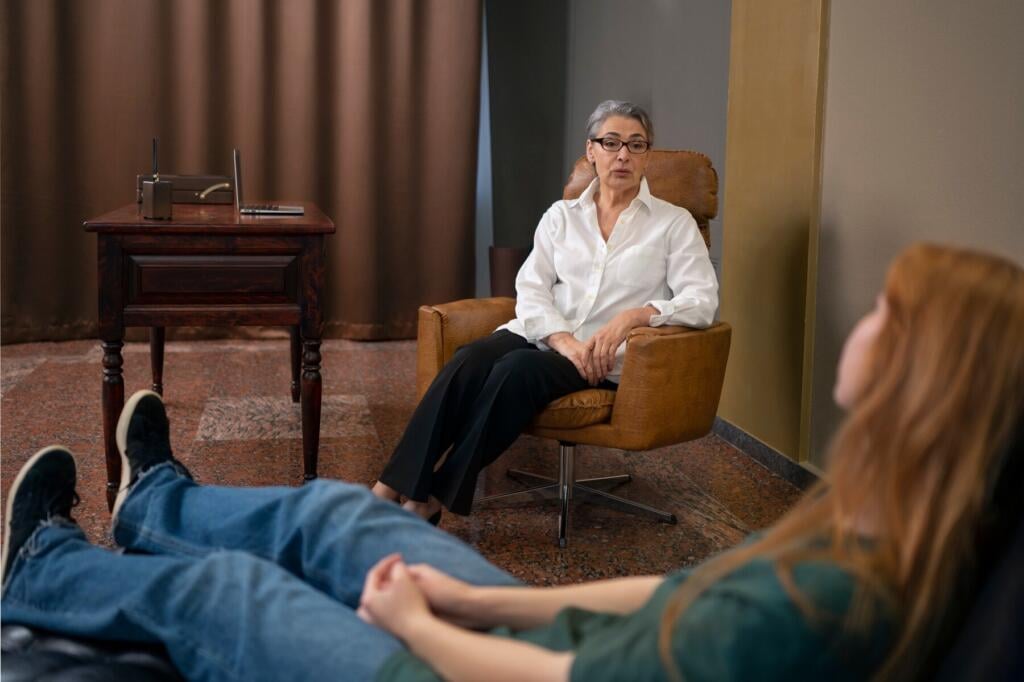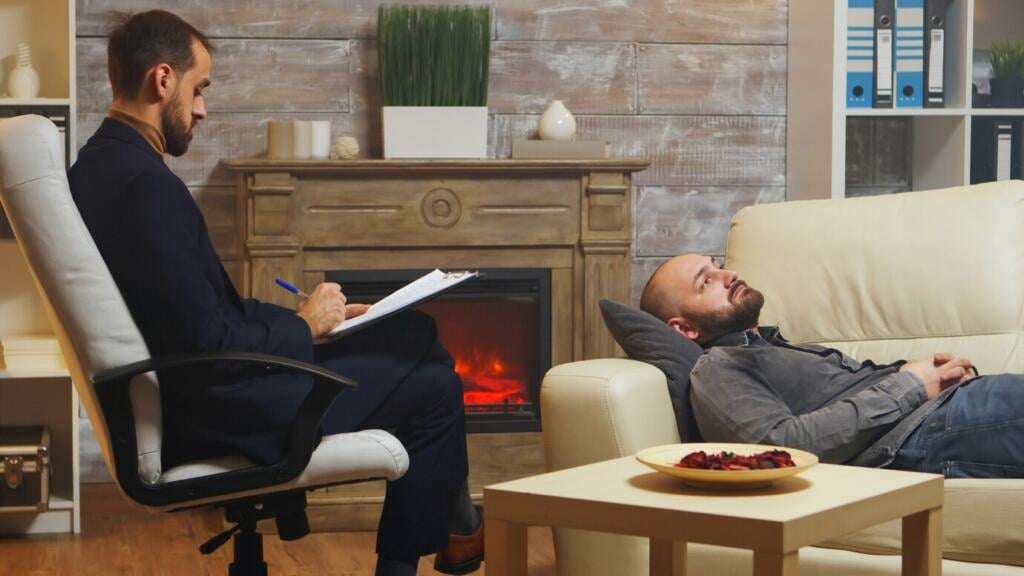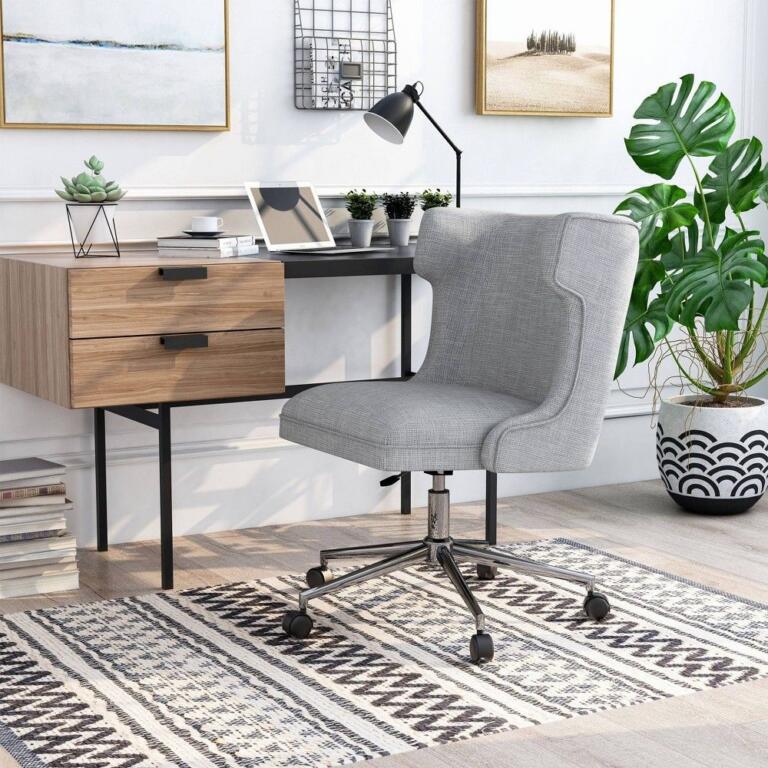When you picture a therapist office furniture, what comes to mind? Probably a cozy couch, a comforting lounge chair, soft lighting, and a space that feels calm—almost sacred. This isn’t just a design choice. It’s a strategic, emotional setting designed to make you feel safe enough to open up. And it all started with one man: Sigmund Freud.
Freud, the father of psychoanalysis, revolutionized the therapeutic space by introducing the famous couch setup. He believed that placing patients in a reclined position—away from direct eye contact—helped them speak more freely, unlocking the subconscious without the pressure of face-to-face conversation. This method, known as free association, transformed therapy forever and turned furniture into a silent, yet powerful, part of the healing process.
Today, therapist office furniture continues to draw from Freud’s original vision—but with modern twists. From ergonomic lounge chairs to soft-textured sofas that invite comfort and trust, every piece is chosen to support emotional release. In this article, we’ll dive into how furniture shapes therapy experiences and why those couches and chairs aren’t just decor—they’re tools of transformation.

The OG Setup: Freud’s Free Association
Our modern idea of a therapist office, complete with the signature lounge chair and couch combo, goes all the way back to Sigmund Freud. He was the mastermind behind the concept of free association, where patients just lie back, relax, and let their thoughts flow without a filter. Freud believed that having patients lie on a couch, without making eye contact, would help them speak more openly and dive deeper into their subconscious thoughts.
Freud’s thinking was that when people weren’t distracted by the therapist’s reactions or facial expressions, they could better access their inner thoughts. So, that couch wasn’t just a piece of furniture. Indeed, it was a tool to help people open up and spill all their secrets. Kind of genius, right?
The Therapist’s Lounge Chair: More Than Just a Seat
Comfort and Endurance
Therapists usually sit in a lounge chair, and there’s a reason for that beyond just looking professional. Therapy sessions, especially in psychoanalysis, can last for a pretty long time. The lounge chair helps the therapist stay comfortable, focused, and engaged, even during those marathon sessions. It’s all about keeping that mental stamina up while providing the patient with undivided attention.
A therapy session, like reading a book, requires a comfortable and focused position to maintain attention for an extended period, right? If you’re looking for the ideal lounge chair to dive into your next great read, check out our article: 10 Reading Chairs for Bedroom You’ll Wish You Bought Sooner.
Non- Intrusive Observation
In classic Freudian style, the therapist often sits behind the patient, out of sight. This setup reduces the feeling of being judged or analyzed under a microscope, letting the patient relax into the moment. The lounge chair supports this whole vibe by allowing the therapist to listen in an open, non-judgmental way.
Professional Distance
Even though the therapist is physically close, the setup with the lounge chair creates a sense of professional distance. The therapist isn’t there to react or interact directly but to observe, listen, and interpret. It’s like they’re a quiet guide, helping the patient explore their thoughts without steering them in any particular direction.
Symbol of Authority and Reflection
That lounge chair also plays a part in representing the therapist’s role as a calm, reflective observer. In traditional psychoanalysis, the therapist is a figure of authority and insight, someone who guides you through the maze of your mind without taking over. The lounge chair’s position, often slightly behind or to the side, reflects this balance of guidance and introspection.
Iconic Lounge Chair Examples for Therapist Offices
- Barcelona Chair: Ludwig Mies van der Rohe’s masterpiece isn’t just a chair; it’s a design statement. Its minimalist yet luxurious design makes it perfect for a professional setting.
- Egg Chair: This chair’s cocoon-like shape is all about creating a private, comfortable space. Ideal for therapists who want a touch of style in their office.

The Famous Therapist Couch: The Ultimate Chill Spot
Relaxation
Lying down on the couch without facing the therapist helped patients let their guard down. They could just say whatever popped into their minds without worrying about judgment. This method was all about getting to those hidden thoughts lurking in the back of their minds.
Free Asociation
Lying down on the couch without facing the therapist helped patients let their guard down. They could just say whatever popped into their minds without worrying about judgment. This method was all about getting to those hidden thoughts lurking in the back of their minds.
Avoiding Direct Eye Contact
Freud believed that eye contact could make patients feel judged or self-conscious. By sitting behind the patient, he could listen without influencing their thoughts with his own reactions. This allowed patients to focus inward, talking more freely and honestly about their inner experiences.
Freud’s Couch: The Symbol of Psychoanalysis
Over time, Freud’s couch became more than just a piece of furniture; it became the iconic symbol of psychoanalysis itself. It represented a space of safety and introspection, where patients could explore their minds without fear of judgment.
Modern Therapy: Evolving the Furniture Game
While some therapists still stick to the classic lounge chair and couch combo, many modern therapists have moved to face-to-face setups. Chairs are more versatile, and the focus is now on creating a comfortable yet engaging space that encourages open dialogue. But for those who follow the traditions of psychoanalysis, the lounge chair and couch setup remains a timeless classic.
Wrapping It Up: More Than Just Furniture
Therapist office furniture is way more than just a few chairs and a couch. It’s designed to create a specific atmosphere that helps both the therapist and the patient do their best work. Whether it’s the cozy embrace of a lounge chair or the welcoming vibe of a therapy couch, these pieces play a key role in the healing process.
While many modern therapists have moved away from this traditional setup, favoring face-to-face arrangements that encourage open dialogue, the core idea remains. The iconic lounge chair and couch may not be as common in contemporary practices, but their influence lingers in the subconscious design of therapy spaces. Even in today’s minimalist or flexible environments, the essence of creating a safe, comfortable, and non-judgmental space continues to shape the way therapists think about furnishing their offices. The legacy of these classic setups lives on, subtly guiding how therapists and patients interact within the therapeutic environment.





